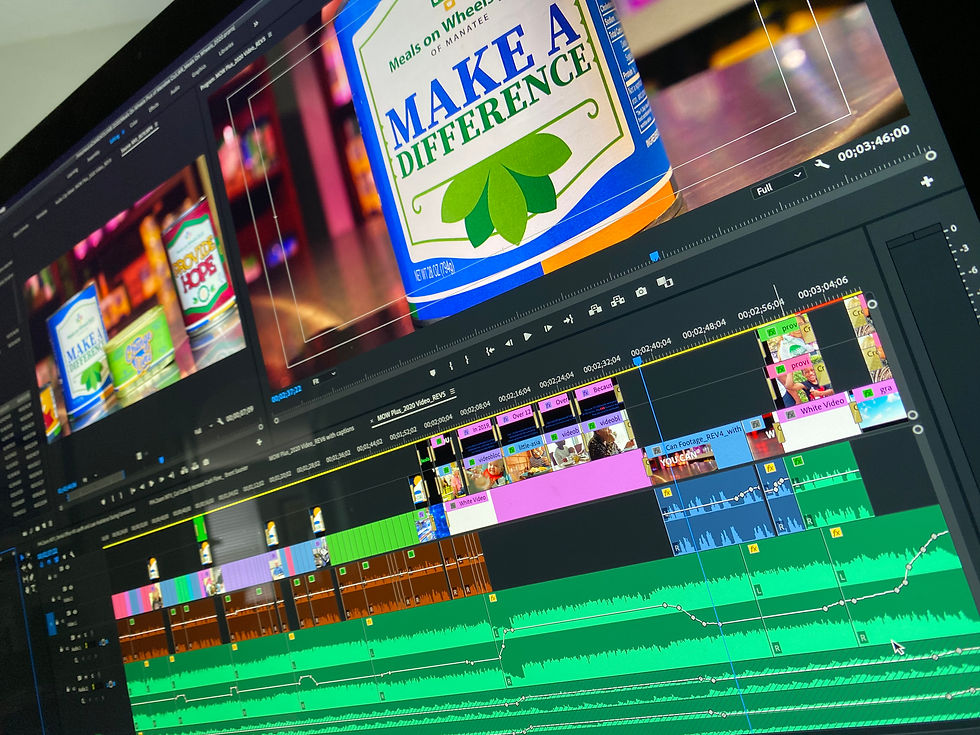In the video production world there's a phrase that creatives hear all too often from their clients: "Can you add more pop?" This is the type of vague feedback that, at first glance, sounds like an easy fix. After all, who doesn’t want their video to stand out or have a certain energy? But for video editors, photographers, graphic designers, and filmmakers, this type of request can be perplexing. What exactly is "pop"? And more importantly, how does one implement it? Let’s take a closer look at what clients might mean when they ask for more "pop," why it's not the most helpful feedback, and how clients can give more constructive input to help creatives deliver a video they’re truly excited about.
What Does "Pop" Really Mean?
When clients ask for more "pop," they’re usually trying to express a desire for the video to feel more dynamic, engaging, or visually striking. However, "pop" can mean different things to different people. Here are a few interpretations of what "pop" might imply:
More Visual Contrast: They might want the colors to stand out more, with bolder contrasts between foreground and background elements.
Increased Energy: This could mean faster cuts, more dynamic motion graphics, or an overall sense of heightened excitement.
Stronger Emotional Impact: Maybe the video is falling flat in terms of emotion, and the client wants a greater sense of urgency, drama, or excitement.
Enhanced Clarity or Emphasis: Sometimes, “pop” could refer to a particular message, product, or call to action not standing out as much as the client expected.
While the client may have a specific end result in mind, asking for "pop" doesn’t effectively communicate what they may actually want. It’s like asking a chef to make a dish "tastier" without specifying if you want more salt, spice, or sweetness.

Why "Pop" Isn't Helpful Feedback
Simply asking for "pop" can leave creative professionals guessing. Since it's not clear what specific change the client is after, creatives are left to interpret the feedback based on their own experience, which can sometimes miss the mark entirely. Here’s why this type of feedback is problematic:
It's Too Vague: "Pop" doesn’t offer any specific direction. Are we talking about color, pacing, music, or something else entirely? Without details, it’s difficult to take actionable steps toward making the client’s vision a reality.
Subjectivity: What one person thinks adds "pop," another might find over-the-top. Clients and creatives might have different ideas of what visual or emotional elements should stand out, leading to potential miscommunication and frustration on both sides.
It Creates a Loop: Vague feedback can lead to rounds and rounds of revisions, where the video might never hit the mark. Each iteration could bring new changes, but the fundamental issue—whatever the client really wanted—remains unclear.

More Constructive Ways to Give Feedback
If you’re a client and want to help your video team nail your vision, here are some suggestions on how to give more targeted, actionable feedback:
Be Specific: Instead of saying "more pop," identify what feels off to you. If it’s the pacing, say, “I feel like the video is dragging, could we speed up the cuts here?” Or if it’s the visuals, “The colors don’t stand out as much as I’d like. Can we make them bolder?” The more specific the feedback, the easier it will be for the creative team to meet your expectations.
Reference Examples: If you’ve seen other videos that match the energy, tone, or style you’re going for, share them with your production team. Having a visual or tonal reference can help clarify your vision.
Define the Desired Emotion or Reaction: Do you want the viewer to feel excited, motivated, or touched? Explaining the emotional impact you’re looking for will give the creative team a clearer sense of the video’s tone. For instance, instead of asking for "pop," you might say, “I want this part of the video to feel more uplifting” or “I need the end to feel more dramatic.”
Focus on Specific Elements: If something feels underwhelming, try to narrow it down. Do the transitions need more flair? Is the background music too subdued? Maybe the text is hard to read, or the motion graphics don’t draw enough attention. By honing in on the exact part of the video that isn’t working, you’ll make it easier for your creative team to fix the issue.
Ask for a Second Opinion: If you’re not entirely sure what’s missing but know something feels off, it’s okay to ask your creative team for their professional opinion. For example, you could say, “I’m not sure what it is, but the video feels a little flat. Can you suggest a way to give it more energy or excitement?”

Turn "Pop" Into Productivity
Asking for "more pop" is a common, well-meaning request from clients, but it’s rarely helpful in guiding creatives toward an effective solution. Video production is an art form where subtle adjustments in pacing, music, visuals, and messaging can make a big difference, and it’s crucial to give your creative team the feedback they need to bring your vision to life.
By being specific, offering examples, and focusing on emotions or particular elements, you’ll not only get a final product that truly “pops” but also build a smoother, more productive working relationship with your video production team. After all, communication is key to achieving a shared creative vision. So the next time you feel tempted to ask for more "pop," try to pinpoint what exactly you’re hoping to see. Your video and your creative team, will thank you! :-)

Comments